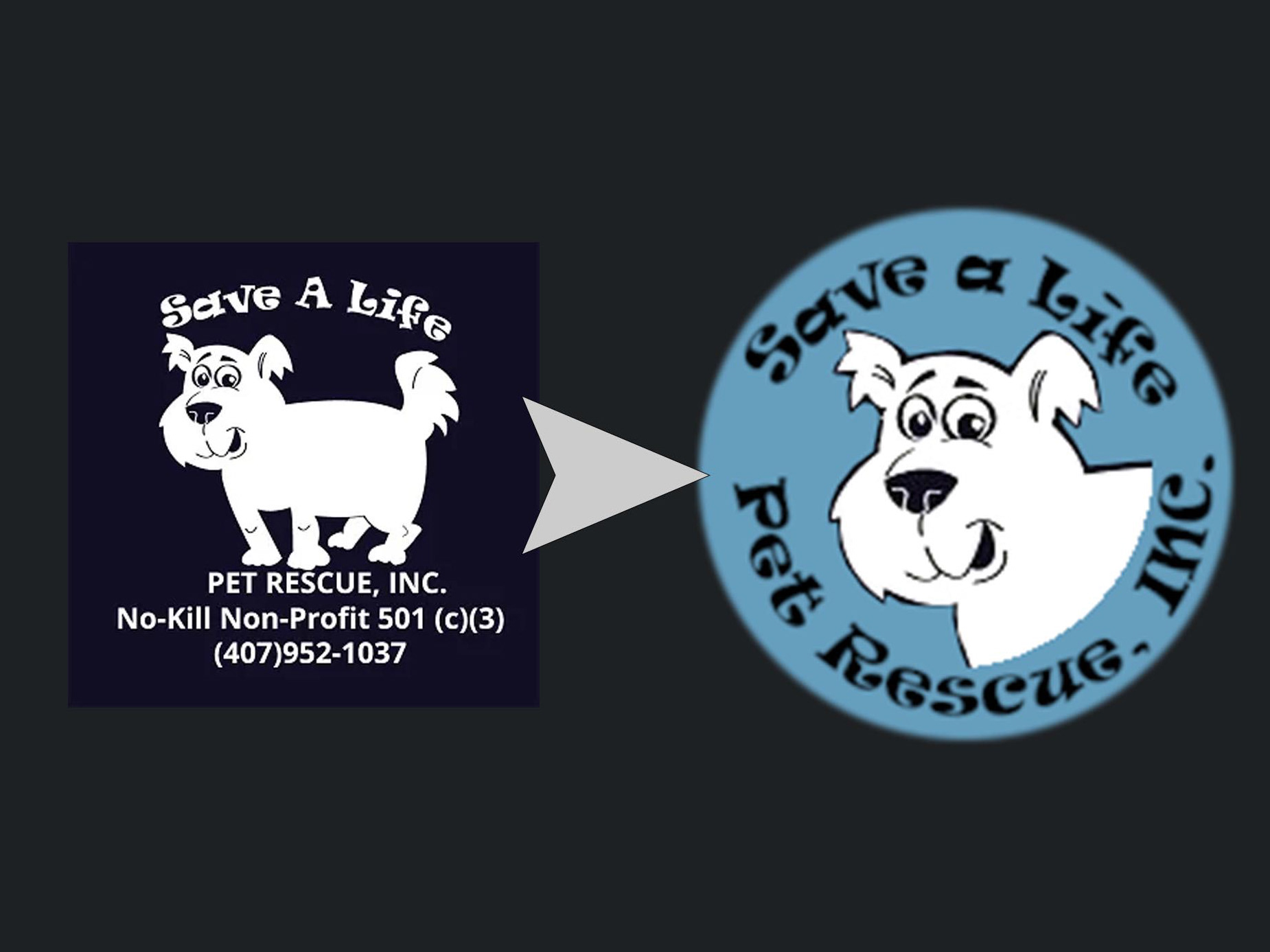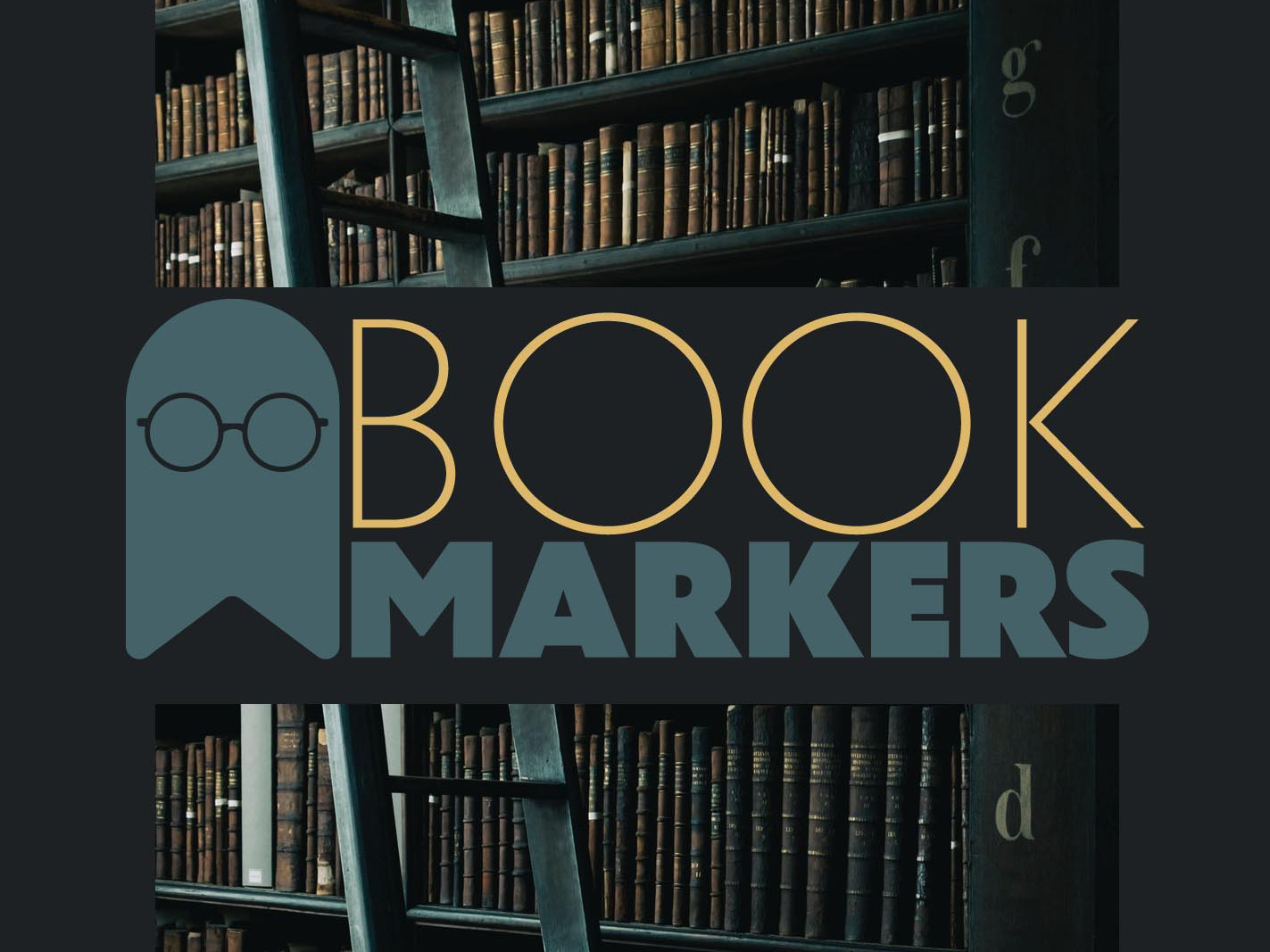My team was given the task of creating an informative and accessible Home Distilling Website Prototype. We aimed at providing a very easy way for our users to get into home distilling and to produce the results they actually want. This case study was completed with the life span of 2.5 weeks.
Executive Summary
"Homebrew and distillation are hobbies that are easily misunderstood. The majority of homebrew/distillation web resources do not present information in a user friendly manner or provide access to necessary materials for high quality distillates."
The Process
We started off with interviews, asking our users questions about their relationship with alcohol and their curiosity about the alcohol creation process. After retrieving some insights about our users, we then metamorphized it by defining what are key issues, what can be improved on and then establishing it into a prototype. As we did that, we also were tasked to do a bit of front end development, using HTML, CSS and Bootstrap.
Research
We started out our case with some competitor analysis. We wanted to see how our competitors or rather, how our market would look like. We know that by US federal law, home distilling is illegal so we were testing how others get around it. We found out that it is okay to sell stills however it is illegal to distill alcohol but not other things like kombucha or essential oils. We continue to work on this project and we found that a lot of competitors don't have much of a digital platform. They usually hold poor user interfaces or have parts that are in development such as Mile Hi Distilling and Brewhaus.
The only one that has a wonderful UI is their navigation and their homepage would be hillbillystills.com. It has a simple and fluid hover navigation that is relatively organized in the matter that you can get what you are searching for, which all of these websites sell: stills and the ingredients to make the final product. hillbilly stills have an interesting addition as they have a distilling calculator page, letting you just put in the measurements of your set-up and the amount of ingredients you put into the process and it'll give you the answer at the end.
Interview Process
Pushing forward from analyzing our market, we focused on conducting 5 interviews who have a healthy relationship with alcohol about their thoughts about home distillation and their obstacles into getting into such a hobby. We framed the questions around 5 objectives to figure out more from our users. The 5 objectives were:
1. Making a selection on a particular spirit
2. Making a selection on a particular brand of spirit
3. Budgeting for purchase
4. Drinking habits/patterns
5. Needs, interests, goals
From the first two objectives, we can determine what is their favorite drink and why. Most famous brands have their own distinct taste or have a clear reason why it's so popular. From the 3rd and 4th reason, we were curious about how much are they willing to spend plus how much are they interested in alcohol in general. the 4th objective was also to gauge our users' relationship with alcohol. Lastly, this is hobby creation for home distilling where we can see what are the obstacles we needed to overcome and what our users would want to make out of an opportunity we could give them.
With those objectives in our framework, we developed our questions with the introduction question of what is their favorite type of alcohol and why. Going with their favorite drink, we gave them the option for curiosity's sake, what would they change about their favorite drink and why, in order to indulge the user's mind to alcohol creation. We dig deeper into the user's thought process and ever asked them if the creation process ever interest them. Then from that moment, we shifted towards about more online presences and information, wondering if that has ever shifted the user's thoughts or interest towards particular brands. Eventually we broke it down to hobby creation and then lastly, what are their thoughts to homebrewing and home distilling, have they ever tried it?
Insights
We have learned that some of our users have tried homebrewing while others have not. However they both said that they felt like the information given to them was unhelpful. I remember when I was interviewing one of the users who have had homebrewing experience, we were having the conversation about the one time he tried it and he said that "it felt like making Kraft Mac & Cheese." He just got the packet and then he just tossed it into the barrel, nothing else and just wait. I asked him how was the end product, he said it didn't even taste great and when I raised the question about what he bought, he doesn't even remember what type of beer he bought, thinking it's a lager or a pilsner. I was surprised by that statement.
Another user had the same predicament, he has tried to make it several times however he couldn't get much success to it because it isn't how he wanted it to be. He talked about how the prices for ingredients just keep going up and up for the components of beer and lost interest in homebrewing. This was due to the lack of the quality result he wanted and how expensive homebrewing has come to be. Besides that, he felt like he didn't know how to make his beer better or have some answer in results that he has produced.
For another user, their favorite spirit, Gentleman Jack was because the user liked the creation process of the spirit. They said that they went to Tennessee and while they were there, they decided to go to the Jack Daniel's Distillery since Jack Daniel's is a very popular American whiskey. They were impressed that "Tennessee" whiskey was different from bourbon because of they filter the alcohol through charcoal. Gentleman Jack is just double filtered through charcoal compared to Jack Daniel's which is single filtered but it makes such a difference to the user and after trying it, it became their go-to spirit.
"It felt like making Kraft Mac & Cheese"
Persona
Here, from all the users, we created Thomas. He is in his early 30's, trying to experiment a bit more with his life and wants to try home distilling. He has a variety of different spirits that he enjoys and just wants to create his own style of spirit however from all of our users, we learned that the information found on the internet and in the books are very limited. As you can see from his brands, he wants to make a high quality spirit as some of the ones listed are brand names that are associated with a higher price point usually.
Story Board
User Scenario:
In summary as you do read the scenario above, there are users who go out and try different drinks or they stick to their staple. Sometimes people get curious about what they're consuming, especially how the drink is made. So they do some research or a quick scroll about the company, some say vaguely how their stuff is made, usually saying that they get the finest grains and then they put it in oak barrels, sherry barrels, or other types of wood. The issue is that users want to make those types of drinks, they want to know how they can really make this product similar to what they consume or to try to get into the hobby of it. The problem with that is often times, the information isn't sorted correctly and it just develops to be a bigger mess and confusion for the user instead, deterring them from pursuing the hobby.
Our Hypothesis:
We believe presenting step-by-step, easy to understand information on home brewing and distillation to alcohol enthusiasts will achieve a lower probability of failure on their first batch and further interest in the development of home brewing and distilling.
We designed a user flow with problems like Thomas’s in mind. Our design attempts to provide beginner-friendly information like recipes and articles on styles of liquor as well as provide a store front.
User Flow
We created this simple flow because we believe this is how simple distilling education and product pages should be in this market. Users who are curious, can look at information and learn more from them while users who are experienced or familiar with the practice, can just buy the ingredients they need and then they can start distilling.
Prototyping
For prototype goals, we created a defined section/tab just for teaching, labelled "Distilling School" while as previously mentioned in the hypothesis, we have a store front too. The store front is available for those already knowledgeable about home distilling but it is also an easy way for our primary user target: newcomers or unexperienced distillers to supplement them with the ingredients we can offer to make their end products. The other tab are articles, these usually are covered by recipes, newsletter items, any additional knowledge or items that supplements the learning from our distilling school tab.
Thus, being said, when we were creating our lo-fi prototype, we didn't know exactly what elements to keep or hold. So we conducted some A/B testing for our user testing, seeing which version they preferred. Do we go modern or do we go retro?
A
B

A
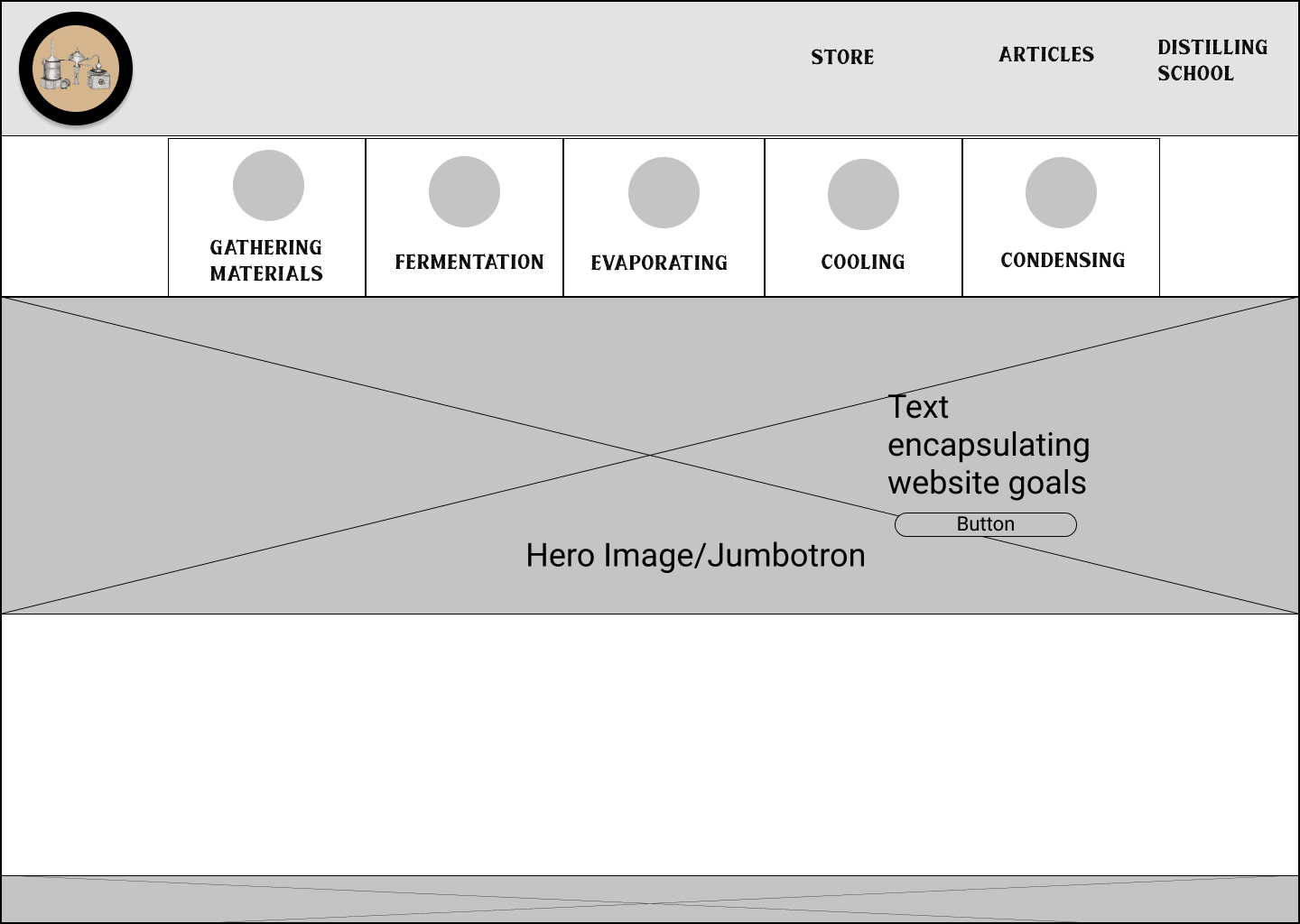
B
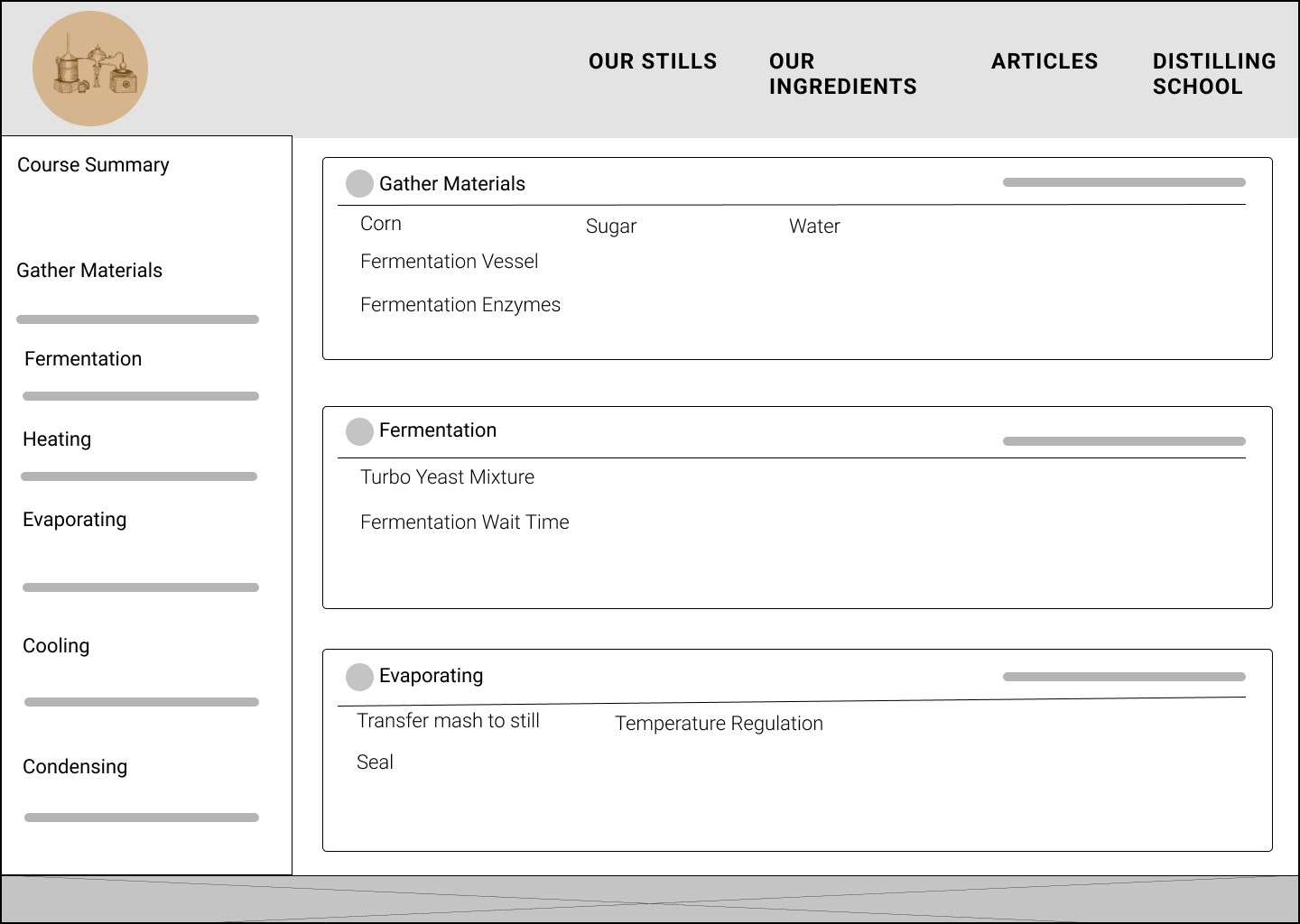
A
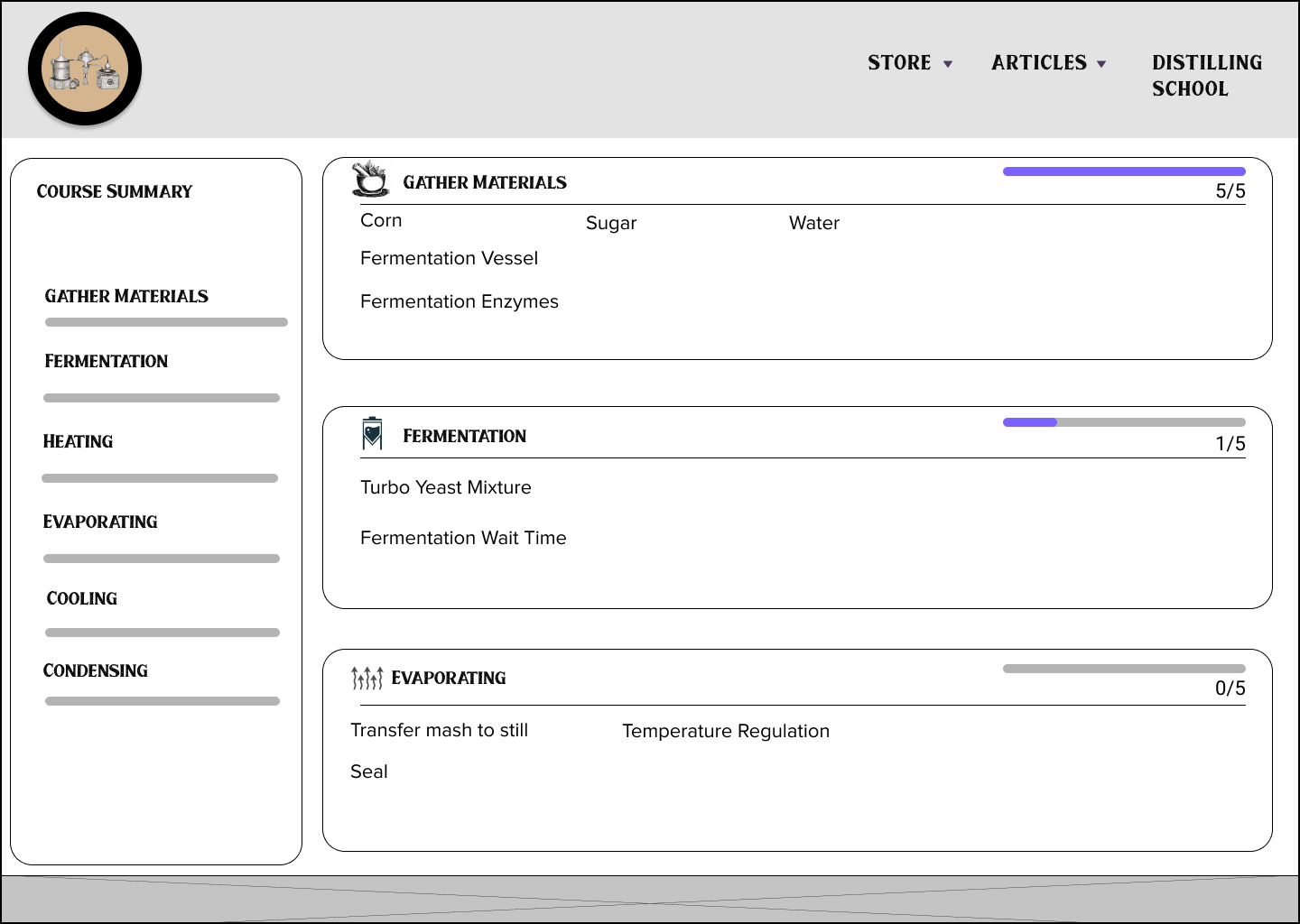
B
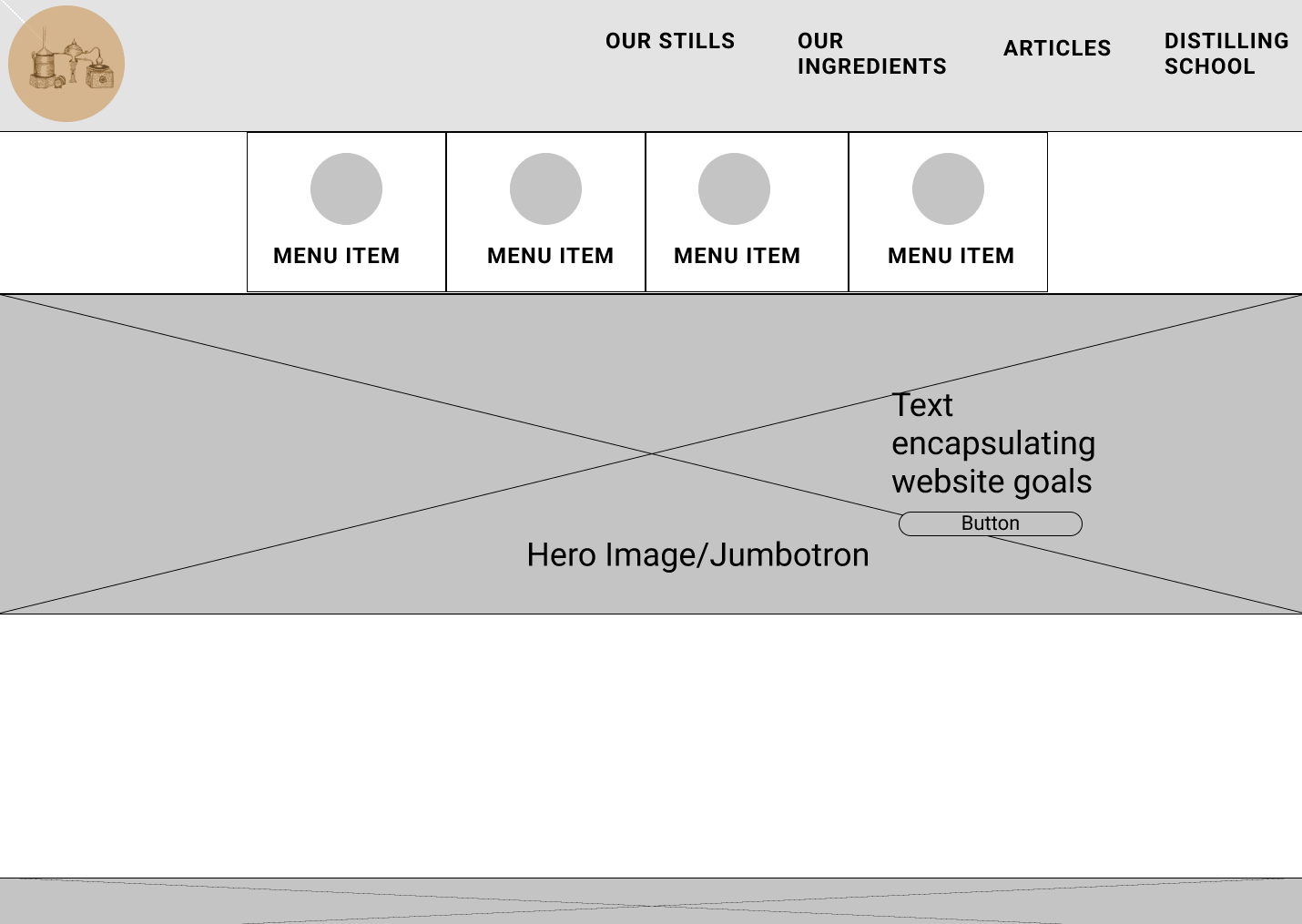
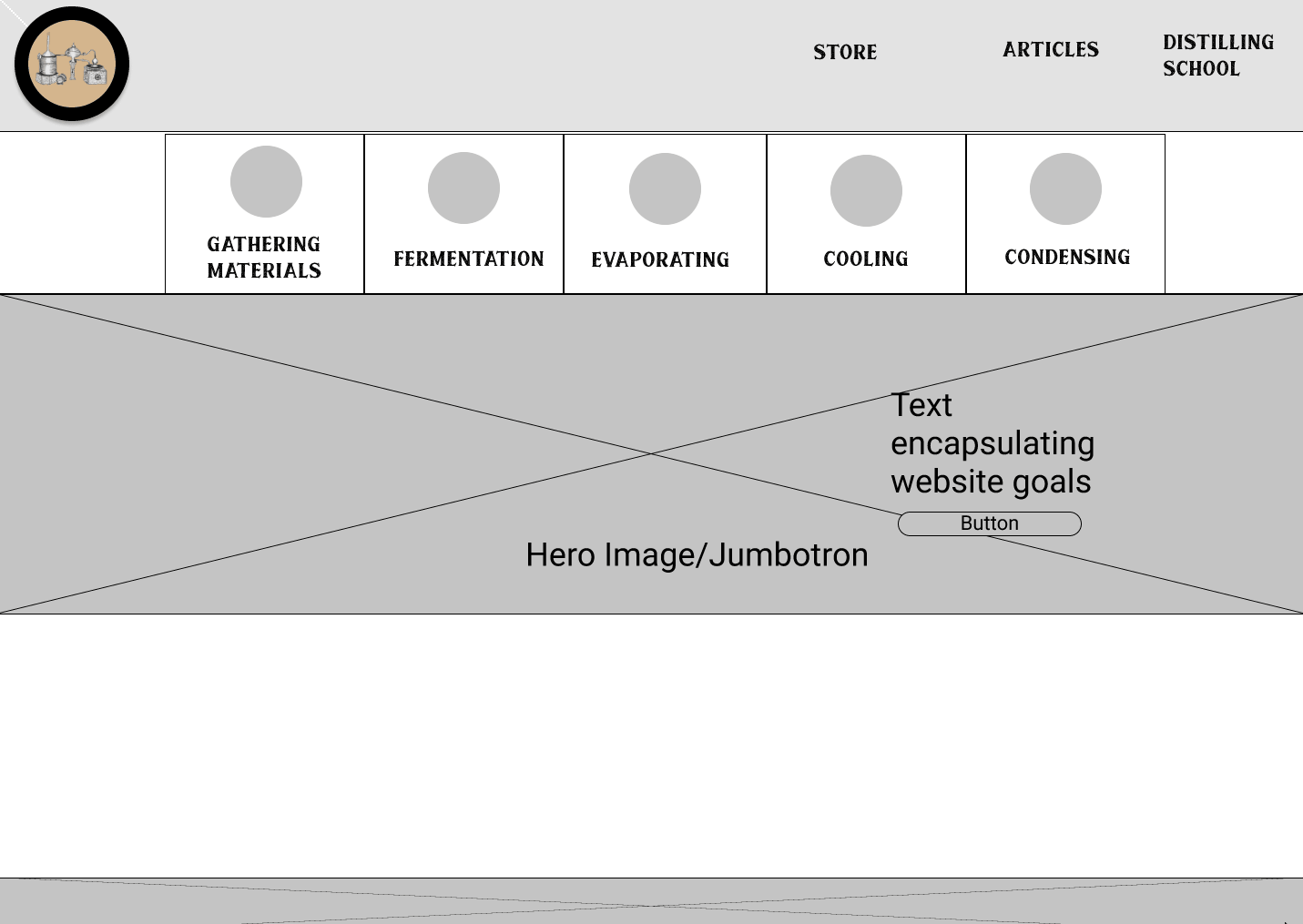
Version A is more of a modern feel, using modern typography and having more items in the navigation bar to use up space that can be used.
Version B uses vintage typography and simplified the navigation menu into a drop down for a more cleaner look.
From having some users testing the interfaces we created and had them use both versions, all the users agreed that version B is the stronger option for both the navigation and the rather vintage look that alcohol brewing is commonly associated with. We proceeded with version B, wondering what elements or rather, what style we would end up going with.
Style Guide
As we went with the vintage style, we also looked at what our competitors had in common too. We knew off the bat that copper had to be a main color we would be using as stills usually come in two elements: steel or copper. Alongside with that, our vintage font was used for headers, which is Bristain. It reminds us of the traditional old prints from the early 1900s to even going back earlier than that. It also support our name as alchemy is regarded as an ancient practice. A precursor to what we know today as chemistry. We chose Ebrima to be the body text because of a simple yet slightly distinct font choice that allows our users to read their information easily since our goal throughout this case study is to present information clearly for our users throughout the whole distilling process.

Home Page
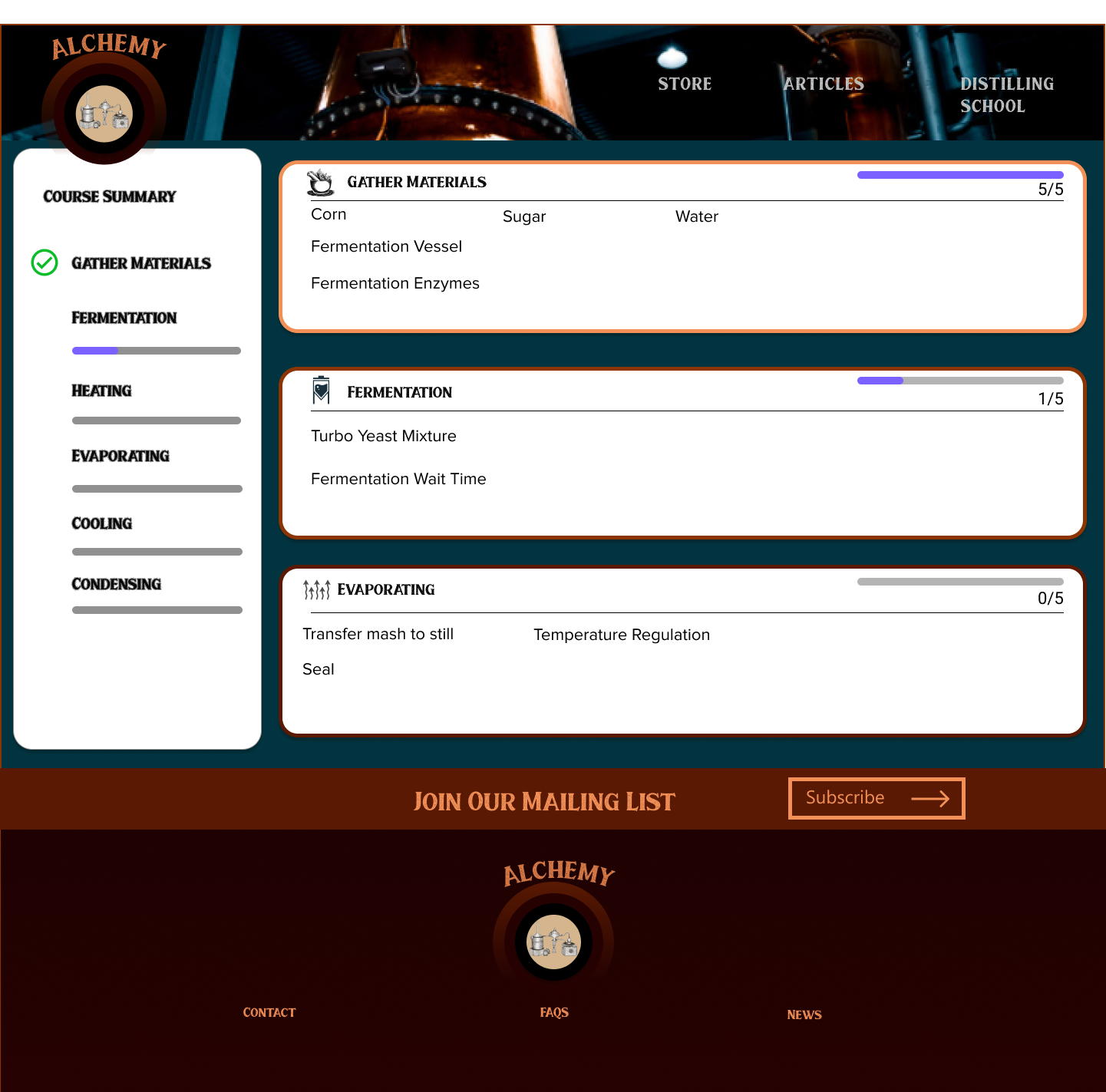
Distilling School
We applied the style guide to our prototype, creating this result. We noticed that we actually created a what people would call "Steampunk" theme. Which works very well with theme in mind as we did previously state that copper has to be involved and copper was very popular among the reinvention of "Old World" traditions. We established a secondary navigation bar as "chapters" throughout the distilling school for whenever a user is lost in the process, they can just simply click on the second bar, whichever icon and it'll take them to that section. All in all, this website is designed to be primarily teaching the user on home distilling and to continue their practice doing so.
Front End Development
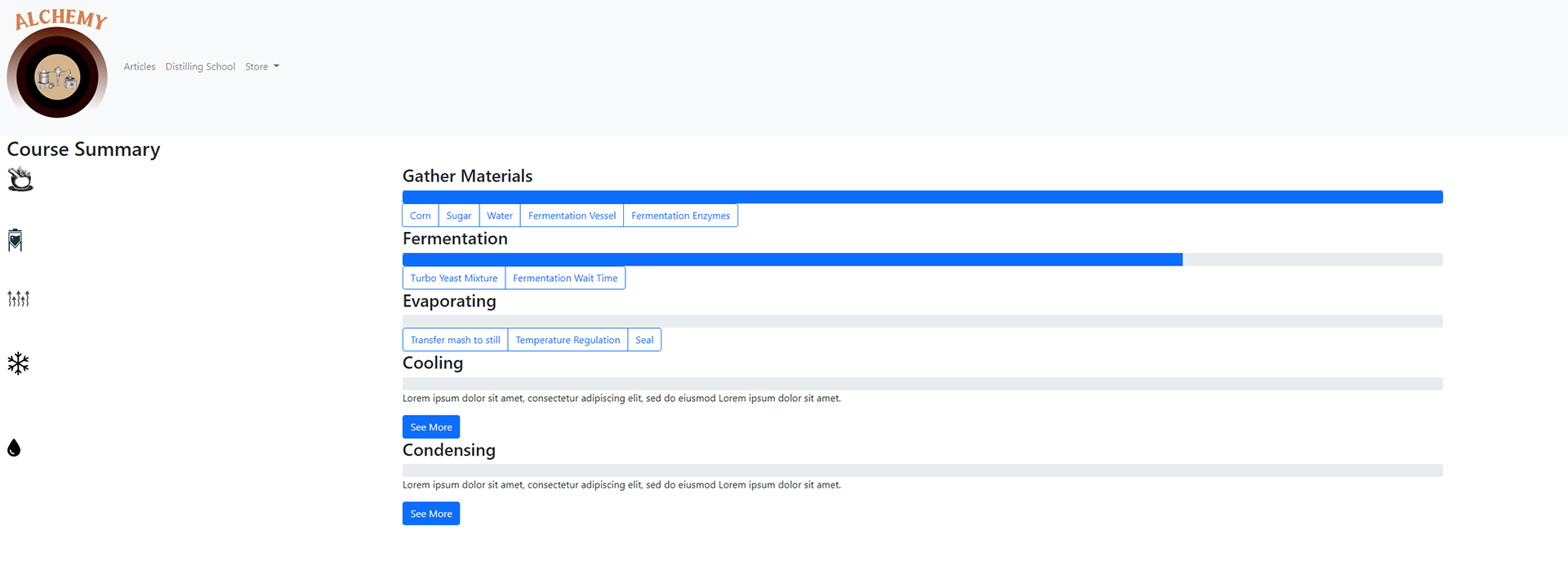
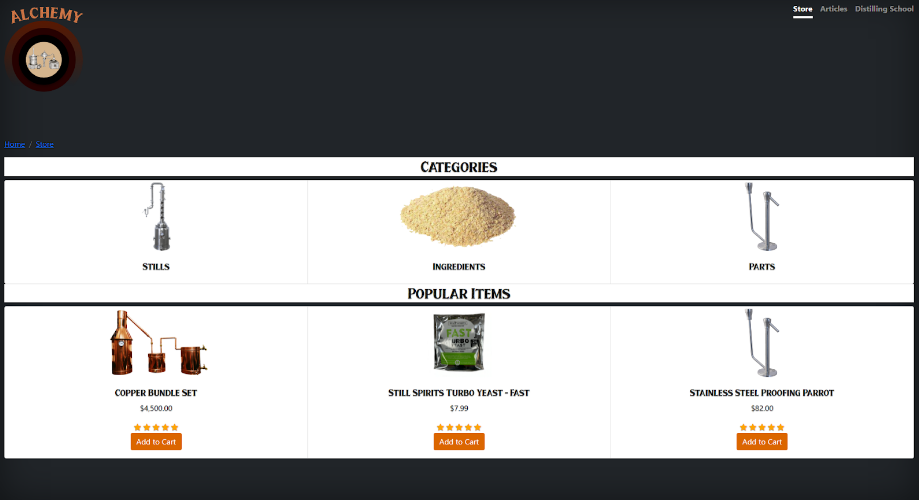
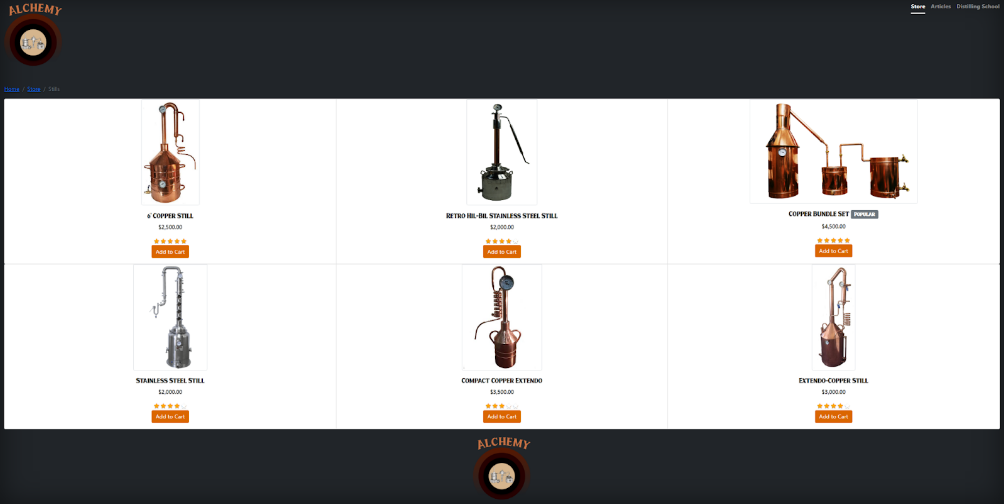
We primarily focused on research and analyzing the market, trying to see how we can overlap the hurdle of the illegal act of home distilling and getting people into the hobby itself. Unfortunately due to time constraints, our actual code isn't refined nor very functional as we have these 3 pages to demonstrate what we can do for a baseline. We also added breadcrumbs from the prototype to the code to allow transparency for our users to track their trail due to the plenty of options and the variety of ingredients that are available to produce different results. We primarily used bootstrap to facilitate the layout of our code. We tweaked some elements in CSS such as the stars so it can be an "interactive" design as well as resizing the images to be uniformed.
Closing Thoughts
Throughout this project, we learned that design is a distillation process too. Learning what ingredients are important in order to distill into the quality product we're able to make in the end. For us, it was the time constraint, we were tasked to go from researching to creating some front end coding development in the time span of 3 weeks for a group of 3 people. We focused on making an interface and guideline that hopefully users would look at our concept thus far and say "yes, I can learn from that." Unfortunately our distilling school is as developed as our store front because frankly, we aren't experienced in distilling alcohol. We had the basic premise or idea about it and continued on with it. This concept has a lot it can be improved on, such as developing a distilling calculator like Hill-Billy Stills does and creating things like bundle options for tiers of people based off of their knowledge of distilling. Other stuff would be to keep tracking your education progress such as push notifications or creating accounts and profiles if the users are interested in that personal matter. All of these options are meant to facilitate and make the user's life easier when they want to get into the distilling hobby, all for to bring the science of distilling to their homes.
The Science of Distilling Brought to Your Home

